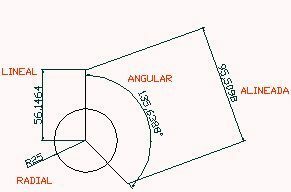Example of Rounding Examples
Math / / July 04, 2021
The rounding is the act of removing significant figures in a number, to facilitate calculations made with it. To understand it better, it is necessary to define the following concept.
What are the Significant Figures?
They are all those non-zero figures in a number; In other words, those that have a value in the number.
Examples of Significant Figures
3.1415926535…
Value of π. Its significant figures, marked in bold, are those that range from units, through decimals and those that would be after the ellipsis.
2.718281828459045235360…
Value of the constant e. Its significant figures, marked in bold, are those that range from units, through decimals and those that would be after the ellipsis.
5,972,200,000,000,000,000,000,000
Value of the Mass of the Earth. All his figures are significant. If there were a decimal point followed by a series of zeros, those would no longer be.
Examples of types of rounding
Since the concepts have been established, from here the application of Rounding will be illustrated with examples, which will be exercised with well-defined Rules.
Examples of Rounding "Up" on Whole Numbers
"When in the units we have a number 5 or higher, the Rounding will be exercised towards the next ten".
Suppose a group of people will enter an elevator. The elevator has a maximum load capacity of 420 Kg. It is about six people, with the following weights:
Person |
Weight |
Rounding |
1 |
57 kg |
57 → 60 |
2 |
80 kg |
80 |
3 |
75 kg |
75 →80 |
4 |
65 kg |
65 → 70 |
5 |
78 kg |
78 → 80 |
6 |
66 kg |
66 → 70 |
The sum of all rounded weights is 440 kg
Since what interests people is to avoid a possible accident in the elevator, their weights were rounded to estimate whether the device would hold up. In view of the result of the rounding, what is done is to leave one of them waiting for the next trip, in order to conveniently get away from the danger number, and that everyone is sure that they will come out healthy and saved.
Examples of rounding "Up" in decimal numbers
Suppose you have a budget of 300 pesos for shopping for a picnic, and we need to calculate the total for each item we take, so as not to exceed the amount with which we count. We are interested in spending less, even. The following table shows the items with their prices, and the rounding that we are going to apply:
“When to the right of the decimal point we have a significant figure of value 5 or greater, we can round up to the next Unit. This applies when we want to keep the Unit as a reference ”.
Article |
Price |
Rounding |
Box bread |
25.60 |
25.60 → 26 |
Ham |
30.70 |
30.70 → 31 |
Cheese |
37.56 |
37.56 → 38 |
Mayonnaise |
24.68 |
24.68 → 25 |
Soft drink |
15.87 |
15.87 → 16 |
Drinking water |
20.90 |
20.90 → 21 |
Disposable cups |
26.58 |
26.58 → 27 |
Disposable plates |
27.86 |
27.86 → 28 |
Apples |
5.96 |
5.96 → 6 |
Sunscreen |
80.85 |
80.85 → 81 |
TOTAL |
299 |
Thanks to the rounding done in the previous table, excess purchases were avoided, and they were adjusted to the budget.
For the same example, we will study a rule that applies especially to decimals:
“When to the right of the first decimal there is a figure of value 5 or greater, the first decimal is increased to its next value. This happens when, when working with the number, the first decimal is decided as a rounding reference ”.
Article |
Price |
Rounding |
Box bread |
25.60 |
25.60 → 25.6 |
Ham |
30.70 |
30.70 → 30.7 |
Cheese |
37.56 |
37.56 → 37.6 |
Mayonnaise |
24.68 |
24.68 → 24.7 |
Soft drink |
15.87 |
15.87 → 15.9 |
Drinking water |
20.90 |
20.90 → 20.9 |
Disposable cups |
26.58 |
26.58 → 26.6 |
Disposable plates |
27.86 |
27.86 → 27.9 |
Apples |
5.96 |
5.96 → 6 |
Sunscreen |
80.85 |
80.85 → 80.9 |
TOTAL |
296.80 |
When it was decided to work to the first decimal place, there was more flexibility in rounding. The final amount was closer to reality. There was a special case in the row "Apples", in which a rounding to the next value of the first decimal 9 was possible. But since the value of 9 is known to amount to 10, what it ultimately implied was jumping to the next value of the unit: 6.
“When the first decimal is 9, and it has a value of 5 or greater to its right, what proceeds is to raise the value of the Unit. (eg 1.96 rounds to 2) "
Examples of Rounding "Down" to Whole Numbers
We will explain with an example in which we have to prepare a Cake, starting from 3 Kg of Flour. A small electronic scale with a capacity of 700 g is being used. It is decided to do several random weighings with the results of the table shown.
"When in the units we have a number 4 or lower, the Rounding will be done leaving a number 0 in its place."
Heavy |
Quantity |
Rounding |
1 |
303 g |
303 → 300 |
2 |
424 g |
424 → 420 |
3 |
551 g |
551 → 550 |
4 |
662 g |
662 → 660 |
5 |
282 g |
282 → 280 |
6 |
461 g |
461 → 460 |
7 |
334 g |
334 → 330 |
TOTAL |
3017 g |
3000 g |
The original sum of the weights is 3017 g = 3.017 Kg, and the total of the rounded weighings is 3000 g. The deviation is 17 grams, which during the process can remain stuck in the container where the cake mix is prepared. It means that you will still have a cake close to the one marked by the instructions. And as the saying goes, it is better than missing.
Examples of Rounding "Down" to Decimal Numbers
“When to the right of the decimal point we have a significant figure of value 4 or less, we can round off leaving the Unit as is. This applies when we want to keep the Unit as a reference ”.
Example |
Number |
Rounding |
1 |
1.4 |
1.4 → 1 |
2 |
12.3 |
12.3 → 12 |
3 |
7.2 |
7.2 → 7 |
4 |
6.1 |
6.1 → 6 |
5 |
105.2 |
105.2 → 105 |
6 |
9.4 |
9.4 → 9 |
7 |
1022.4 |
1022.4 → 1022 |
8 |
956.3 |
956.3 → 956 |
9 |
3471.2 |
3471.2 → 3471 |
10 |
242.3 |
242.3 → 242 |
11 |
14.1 |
14.1 → 14 |
12 |
10250.4 |
10250.4 → 10250 |
13 |
360.1 |
360.1 → 360 |
14 |
68.4 |
68.4 → 68 |
“When to the right of the first decimal there is a figure of value 4 or less, the first decimal is left intact. This occurs when, when working with the number, the first decimal is decided as the rounding reference ”.
Example |
Number |
Rounding |
1 |
1.41 |
1.41 → 1.4 |
2 |
12.33 |
12.33 → 12.3 |
3 |
7.24 |
7.24 → 7.2 |
4 |
6.12 |
6.12 → 6.1 |
5 |
105.23 |
105.23 → 105.2 |
6 |
9.41 |
9.41 → 9.4 |
7 |
1022.44 |
1022.44 → 1022.4 |
8 |
956.31 |
956.31 → 956.3 |
9 |
3471.22 |
3471.22 → 3471.2 |
10 |
242.31 |
242.31 → 242.3 |
11 |
14.10 |
14.10 → 14.1 |
12 |
10250.43 |
10250.43 → 10250.4 |
13 |
360.12 |
360.12 → 360.1 |
14 |
68.41 |
68.41 → 68.4 |
Examples of Mixed Rounding
Number |
Roundings |
Explanation |
1.38 |
1.38 → 1.40 → 1 |
By 8 there is rounding up to the first decimal place. For the 4 there is rounding down if you work with the Unit. |
12.83 |
12.83 → 12.8 → 13 |
By the 3 there is rounding down to the first decimal place. For the 8 there is rounding up if you work with the Unit. |
99.38 |
99.38 → 99.4 → 99 |
By 8 there is rounding up to the first decimal place. For the 4 there is rounding down if you work with the Unit. |
3.14 |
3.14 → 3.1 → 3 |
By the 4 there is rounding down to the first decimal place. For 1 there is rounding down if you work with the Unit |
105.82 |
105.82 → 105.8 → 106 → 110 |
By the 2 there is rounding down to the first decimal place. For the 8 there is rounding up if you work with the Unit. Because the unit changed to 6, it can still round up to Ten. |
Any questions? Leave it in the comments.



